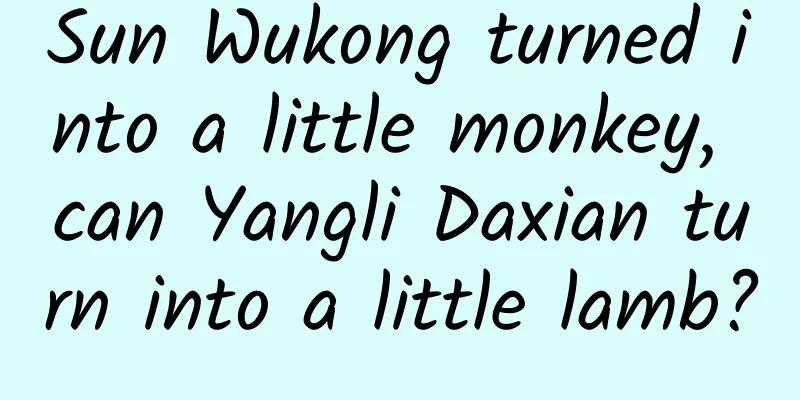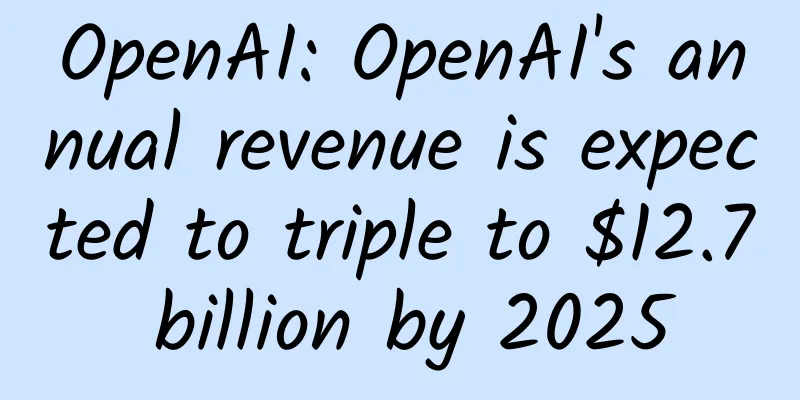Sun Wukong turned into a little monkey, can Yangli Daxian turn into a little lamb?

|
On July 5, 1996, on a soft summer night in Roslin, Scotland, one of the most famous sheep in history was quietly born in a barn near the Roslin Institute. Her birth was not as well-known as it would be later, with no media spotlight present and even her main creator, Ian Wilmut, being unaware of the moment. The existence of the little animal was not made public until February of the following year. A sheep destined for history | Paul Hudson / Wikimedia Commons The pale grey animal looked like any other lamb in the Scottish hills, but her special features soon sparked a worldwide debate: she was the first mammal to be successfully cloned from a somatic cell, a complete organism developed from the nucleus of a mammary cell of an adult ewe. Ian Wilmut named the lamb "Dolly" after the American country singer Dolly Parton. The first cloned sheep "Clone" comes from the Greek word "κλών" (klōn, tender shoot), which refers to the process of using tender shoots of plants to cultivate new plants. We have learned about the omnipotence of cells in high school biology textbooks. It is relatively easy to induce plant somatic cells to differentiate and develop. Many plant vegetative organs can even become new plants without any induction. Humans have explored many methods of asexual reproduction of plants in the long history of agricultural production, and naturally have thought about whether the same method can be used to mass-produce animals with excellent traits. But biology books also tell us that restoring the omnipotence of animal cells is much more difficult. Before Dolly, people had already begun cloning animals and had achieved some success. As early as 1952, Robert Briggs and Thomas J. King cloned the northern leopard frog; in 1963, Tong Dizhou cloned the carp. How can the progress of biological technology be without zebrafish? So in 1981, zebrafish were also cloned. Gradually, people hoped to apply cloning technology to more complex animals. Ten years before Dolly was born, sheep and mice had been successfully cloned - but they used early embryonic cells instead of somatic cells (this sounds more like assisted reproductive technology than replication). Obviously, nuclear transplantation cloning is easier to achieve on lower (or more primitive) animals and less differentiated cells, which also highlights the significance of Dolly. As mentioned above, this is the first successful mammalian cloning using somatic cell nuclei. Her cell nucleus donor was a Finn-Dorset sheep, and her egg cell donor was a Scottish Blackface sheep. Obviously, Dolly's characteristics should be determined by the cell nucleus, and she is naturally also a Finn-Dorset sheep. Is cloning a dangerous technology? The process of cloning Dolly was not very smooth. There were 277 eggs tested at the same time as Dolly, but only 13 developed into embryos. After the embryos were transplanted, only Dolly was born. The success ratio was 1:13:277. It can be seen that in the 1990s, somatic cell transplantation cloning was still a very immature technology, but this did not stop people from discussing and looking forward to it. Looking back at the 20th century, many advances in the field of biomedicine have greatly changed human lifestyles and social forms, such as the discovery of penicillin, the exploration of genetic structure, and the eradication of smallpox. The birth of Dolly is also one of them, but unlike the previous ones, Dolly's birth has promoted human beings' understanding of their own significance. To exaggerate a little, the definition of "human" has changed since Dolly was made public. If we could use the excuse of technological gap to escape before, humans now have to face this problem: “Will humans clone humans?” Before Dolly was born, cloning was more of a subject for science fiction novels or a technical possibility (such as in Blade Runner), and many people believed that it was something that would never be realized in the near future. However, with the emergence of Dolly, society's view on cloning technology took a sharp turn for the worse, and some even believed that the development of science has reached the brink of destroying humanity. In literary and artistic creation, the ever-lasting science fiction theme of "cloning" has once again shined, and movies such as The Sixth Day, The Island of Clones, and Moon are a reflection of this trend of thought. However, artistic creation is just artistic creation. At least for now, cloning humans is not in the plan of any researcher, and there is no material basis. The significance of completely duplicated animal cloning is quite limited. People have realized that one of the essences of species protection is the protection of genetic diversity, and simply increasing the number of individuals is meaningless. In 1998, a domestic scientific research team established a project to breed giant pandas using heterologous nuclear cytoplasmic cloning (putting the nucleus of giant panda somatic cells into the enucleated oocytes of other animals). The project made some progress at first, but then the failure rate of embryo synthesis remained high. Coupled with the change in the concept of protection, the idea of "saving species by cloning" was eventually denied. Dolly was born old? Moreover, life is a complex system generated in the process of interaction with the environment, and humans are the sum of social relations. Cloning a large army of pandas or humans can only be science fiction for the time being. The more realistic significance of cloning Dolly should be the possibility of medical research, such as targeted cloning of organs, replication of genetically engineered animals, and even inducing human self-regeneration. In just a few years after Dolly was born, organ cloning and cultivation research projects initiated by biopharmaceutical companies emerged like mushrooms after rain. It should be noted that at that time, human self-awareness was far less clear than it is today, and the human genome project would not be completed for nearly ten years. However, the cloning craze seemed to be quickly dampened. On February 14, 2003, six-and-a-half-year-old Dolly died at the Roslin Institute, not living to the average lifespan of a sheep - 11 to 12 years old. The cause of death was lung disease and arthritis. The mainstream view at the time was that Dolly's genetic age at birth was already six years old, the same as the cell nucleus donor. In fact, when Dolly was born, some people had expressed similar concerns. The telomere mechanism discovered earlier in the 20th century seemed to secretly determine Dolly's fate of premature aging. Telomeres are some basic units at the ends of chromosomes, with base sequences repeated 500 to 3,000 times, combined with some proteins (this is the telomere of mammals, and the telomere sequences and repetition rates of other biological groups are different). Every time the genetic material divides, the telomere shortens to protect the chromosome itself from damage. The telomeres in the original state of stem cells are the longest. When the telomeres are shortened to nothing, cell division will damage the chromosomes themselves, leading to cell death. In some cells (such as egg cells), there are enzymes that extend telomeres, and telomerase is generally lacking in somatic cells. Opponents of the view that "cloned sheep are prematurely aged" believe that since egg cells have their own telomerase, they may use some mechanism to extend the too short telomeres of somatic cells. The future of cloning Reality seems to be on the side of pessimists. A study in 1999 showed that Dolly's telomeres were indeed shorter, suggesting that Dolly may have experienced excessive aging, and it seemed that somatic cell cloning was about to become obsolete. However, subsequent reports raised objections. The Roslin Institute stated that no signs of premature aging were found in Dolly, and Dolly's poor health may be caused by lung lesions caused by long-term indoor living. In 2016, a new study went a step further, reporting that 13 cloned sheep had lived to the age of eight, four of which were from the same cell line as Dolly. No evidence of aging diseases was found in them, which basically ruled out the adverse effects of somatic cell cloning and also showed that Dolly's premature death was likely an accident during the experiment. This is undoubtedly good news in the biomedical field, but the current research direction is still mainly focused on induced stem cell technology (iPS cell), that is, using induction factors to dedifferentiate mature somatic cells and return to the stem cell state. Today, iPS cell technology is developing rapidly and has been widely used, but it has also produced many scientific frauds. To this day, people have not fully understood the mechanism behind somatic cell cloning of animals. Dolly and her successors have brought us more and more mechanisms to be explored and ethical issues to be identified. Although complete human cloning will not be allowed to occur, in the future, related derivative technologies may still be used to transform humans themselves, or even redefine humans. However, that is something that we and the lambs cannot understand. |
Recommend
You have watched a lot of doomsday science fiction movies, but have you ever thought about where is the best place to take refuge?
Written by: Qi Dazai Layout: Li Xuewei If global ...
6 Content Marketing Mistakes to Avoid in 2019
Content marketing has become a key factor for bus...
These phones can be upgraded to Android 5.0, but yours can't?
According to the information we have received so ...
Why did the giant panda "Tuan Tuan" donated to Taiwan suffer from "epilepsy"? Can it be cured? Experts explain →
According to media reports The giant panda "...
Examples of optimal materials for information flow advertising to help you improve your conversion rate!
We have selected and compiled some information fl...
How important is marketing in international trade?
Due to the basic attributes of OEM, there is litt...
Apple can’t escape the law of true fragrance: iOS 16 will be embedded with a large number of advertisements, will you buy it?
I once saw someone say in a forum: The only reaso...
To enter the top five of the list, this social e-commerce app did these operations
While concepts such as new retail and unmanned st...
How much does it cost to join the Zibo Second-hand Car Mini Program?
Is it easy to join the Zibo Second-hand Car Mini ...
The domineering "little trumpet": The beautiful morning glory is actually a "foreigner"?
Speaking of invasive alien species, the most well...
Seven years after Jobs left: Apple's compromise and "betrayal"
In the post-Jobs era, Apple's market value ex...
How to conduct big data analysis and capture the fickle hearts of users?
I originally thought that "homebodies" ...
Sohu Video finally invests 100 million yuan to build the first VR content ecosystem
2016 is the first year of VR (virtual reality), a...
Follow the satellite to travel Ningbo丨See the sea along the canal
The Grand Canal of China (including the Grand Can...









